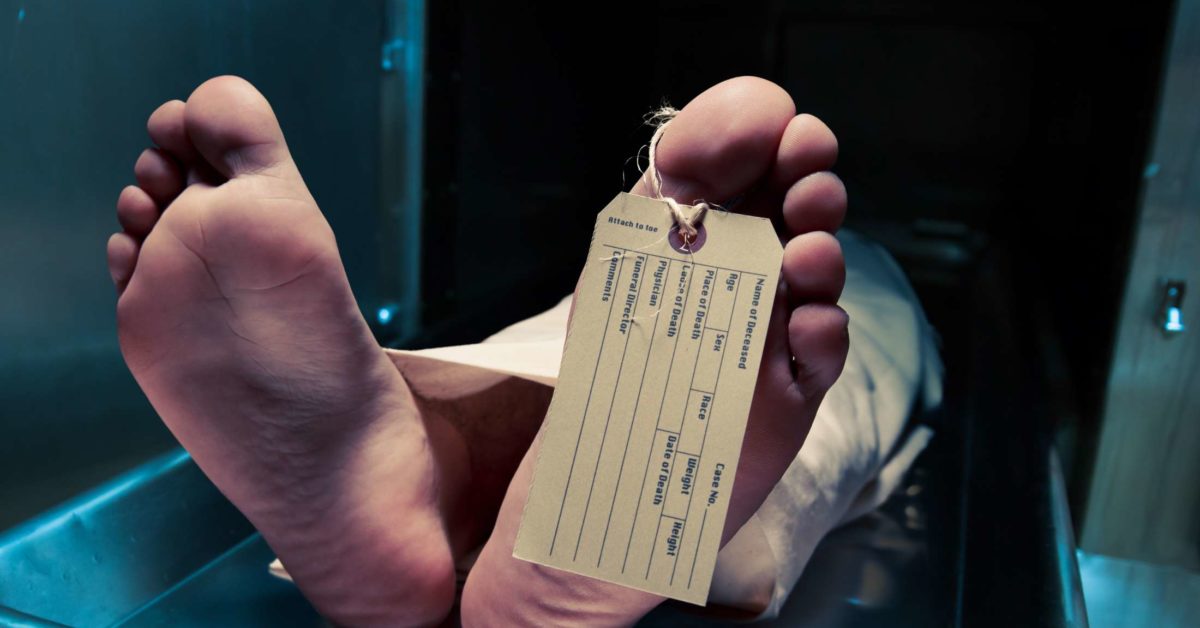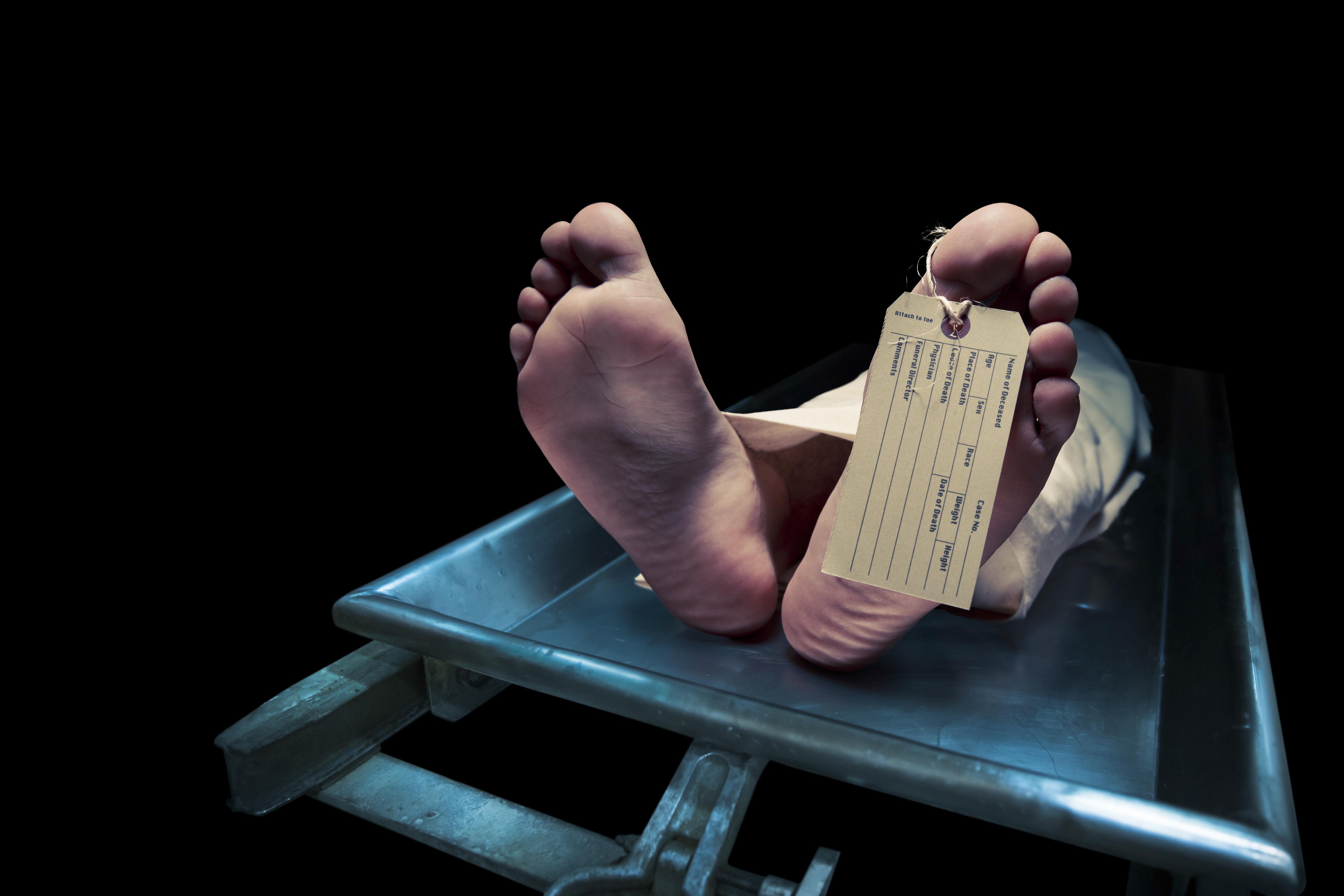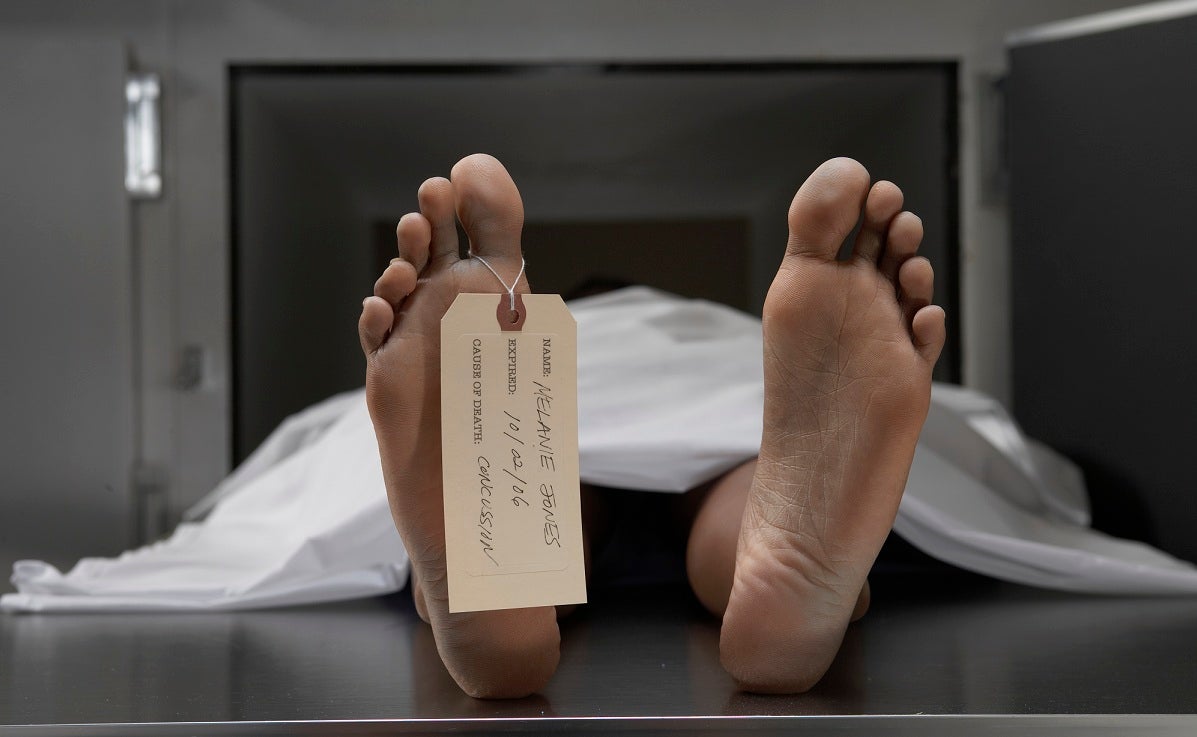Understanding Your Feet - When They Feel "Dead"
Have you ever experienced that peculiar sensation when your feet feel like they've completely gone to sleep? It's a common feeling, isn't it? One moment, everything is normal, and the next, your foot feels like a heavy, unresponsive lump, perhaps with a strange tingling or prickling. This feeling, which some might call "dead feet," can be a bit unsettling, making it hard to move or even just stand comfortably. It happens to nearly everyone at some point, and usually, it's nothing to worry about, just a temporary signal from your body.
So, what exactly is going on when your feet lose their usual feeling, or when they seem to have a life of their own, perhaps feeling tingly or even stiff? It's actually a pretty interesting way your body communicates. Sometimes, it's just a simple matter of how you're sitting or what you're wearing. Other times, it might point to something a little deeper, like how your body is handling stress or if it's missing some key nutrients it needs to keep everything running smoothly. You know, it's almost like your feet are sending you a little message, asking for a bit of attention.
This whole idea of "dead feet" covers a few different experiences, from that temporary numbness to other issues like skin changes or even how you walk. It's really about paying attention to what your feet are telling you, because they do a lot for us every single day. We'll look at some of the common reasons why your feet might feel a bit out of sorts, and what you can do to help them feel their best. It's pretty fascinating, actually, how much our feet can reveal about our overall well-being.
- Painting Of Queen Elizabeth Ii
- Pura Coffee
- Does Rihanna Have Hiv
- Nude Music Video Youtube
- Wiz Khalifa Wild And Free
Table of Contents
- What Does It Mean When Your Feet Feel Like They're Asleep?
- What's the Deal with "Foot Drop"?
- Is "Dead Skin" on Your Feet a Problem?
- Can Serious Health Conditions Affect Your Feet?
- What Other Meanings Does "Dead Feet" Have?
What Does It Mean When Your Feet Feel Like They're Asleep?
That feeling of your feet being "asleep," or perhaps what some might call "dead feet," is a pretty common experience, isn't it? It's that strange sensation of losing feeling, often paired with a prickly or tingling feeling, like tiny pins are poking you. Basically, this happens when the messages from your foot's feeling pathways aren't getting through as they should. It's usually just a temporary thing, a signal that something is interrupting the flow of information or vital supplies to those delicate pathways.
Why Do Our Feet Go Numb Sometimes?
You know, that peculiar feeling of your feet going numb, it often shows up after we've been sitting in a bit of an awkward position for a little while. For example, if you've been sitting with your feet tucked right underneath you, or maybe if you're wearing shoes that are just a little too tight, you might notice this sensation. What's happening, actually, is that the gentle squeeze on the tiny pathways that carry messages and important stuff like oxygen and food to your nerves gets a bit restricted. So, in a way, those nerves just aren't getting all they need to work properly, and that's when your foot can start to feel a bit detached, like it's not quite there. It's pretty much your body's way of saying, "Hey, let's adjust this position, shall we?"
Can Anxiety Make Your Feet Feel Strange?
It might seem a bit surprising, but yes, feelings of unease and even very intense moments of worry can actually cause your body to react in physical ways, including sensations in your feet. Sometimes, when someone is feeling very worried or experiencing a sudden wave of panic, their body can react by causing tingling or that numb feeling, even in their feet. It's a real physical response to what's happening inside, so, it's not just "all in your head," as they say. This can be part of how the body expresses its stress, making your feet feel a little bit odd, almost like they're not fully connected.
- What Is Birt
- Amc Popcorn Bucket
- Casio Shakira
- Is Emma Drake Coming Back To Gh
- Penn Badgley And Adam Brody Look Alike
What About Vitamins and Your Feet?
Our bodies need a whole bunch of different things to work properly, and one of those is a particular kind of vitamin, a B vitamin, specifically B12. If your body isn't getting enough of this, you might start to notice some sensations, and sometimes, those feelings can appear in your feet. These sensations, like numbness and tingling, might show up quite suddenly, or they could gradually become noticeable over a period of time. So, in some respects, if your feet are feeling a bit off, it could be a subtle hint that your body is looking for a bit more of that essential nutrient to keep those feeling pathways happy and working as they should. It's a good example of how what we take in can affect how we feel, even right down to our toes.
What's the Deal with "Foot Drop"?
Sometimes, when people talk about "dead feet," they might be referring to a condition called "foot drop." This isn't about your foot feeling asleep, but rather a situation where it's hard to lift the front part of your foot. It's like the muscles that usually pull your toes and the front of your foot upwards aren't quite doing their job. This can make walking a bit tricky, as your toes might tend to drag along the ground. So, people who experience this often have to change the way they walk to avoid tripping. It's a pretty noticeable change in how one moves, and it can be quite frustrating, naturally.
How Does "Foot Drop" Affect Walking?
When someone has "foot drop," it makes it quite hard to lift the front part of their foot, which means it might scrape or drag on the floor as they take a step. To try and keep the foot from catching on the ground, a person with "dead feet" like this might raise their thigh more than usual when they walk, almost as if they're climbing stairs. This rather unusual way of moving, which some people call a "steppage gait," can also cause the foot to slap down onto the floor with each step. It's a distinctive way of walking that helps the person avoid tripping, but it can be quite tiring and obviously different from a typical stride.
What Can Cause "Dead Feet" to Drag?
This inability to lift the front of the foot, or "foot drop," can sometimes come from a gentle squeeze on specific pathways in the back, like the L5 nerve root or a collection of nerves that come from the lower back and tailbone area. When these pathways are affected, it might lead to a feeling of weakness in moving the foot up or down at the ankle joint. It can also make it harder to turn the foot to the outer or inner side at the ankle, or even to move the leg away from the body at the hip, and bring the thigh inward from the hip joint. Basically, it affects the signals that tell those muscles what to do, which can make the foot feel a bit "dead" in terms of its usual movements. Recognizing these initial signs can really help in figuring out what's causing the issue and getting the right support in a good amount of time. There are a few common signs to watch out for, like difficulty lifting the front of the foot, which is often one of the first things people notice.
Is "Dead Skin" on Your Feet a Problem?
When we talk about "dead feet," sometimes we're referring to the buildup of dead skin on your soles and heels. This isn't a sign of good health, actually. It can, in fact, lead to a number of uncomfortable feelings. You might experience itchy skin, a rash, or perhaps skin that's peeling or flaky. The skin might also feel rough and dry, and sometimes, it can even lead to an unpleasant smell. It's pretty much your body telling you that the outer layer of skin isn't shedding as it should, and it can cause quite a few annoyances. So, it's important to know what causes this buildup and how to manage it, because if it's not looked after properly, it can lead to other, more serious foot issues, which nobody wants.
Why Does "Dead Skin" Build Up?
There are a few reasons why that layer of "dead skin" might start to build up on your feet. One common reason is simply a lack of enough moisture, so your skin gets very dry. Taking very long showers can sometimes contribute to this, too, surprisingly enough. Certain medications can also play a part, and so can some skin conditions. Athlete's foot, for instance, is a common culprit. All these things can disrupt the natural process of your skin shedding its old cells, leading to that rough, sometimes uncomfortable layer. It's worth remembering that while some dead skin can offer a bit of protection, too much of it, like thick calluses, can make your feet feel uncomfortable and look less than ideal. They might even cause pain, itching, or a burning feeling. So, understanding what causes this "dead feet" skin is really the first step in dealing with it.
How Do You Get Rid of "Dead Feet" Skin?
Getting rid of that extra "dead skin" from your feet is pretty straightforward, actually. One of the simplest ways is to use a pumice stone, which is a natural stone from volcanoes. All you really need to do is soak your feet in warm water for about ten to fifteen minutes, and then gently rub the pumice stone over the areas where the skin is rough. Just be careful if you have any cuts or open spots; you should definitely avoid using it then. Besides that, there are other methods you can try. You can exfoliate by scrubbing, or by soaking your feet in special solutions, or even by applying paraffin wax. Some people also find that periodic use of foot peels, which are like face peels but for your feet, can be very helpful. These peels use a mix of ingredients that help soften and remove that surface layer of old skin cells, making your feet feel smoother. These methods can make your feet healthier and much more comfortable, helping with those calluses and rough patches. So, there are quite a few options to help your "dead feet" feel refreshed.
Can Serious Health Conditions Affect Your Feet?
It's really important to know that certain health conditions, like diabetes, can have a big impact on your feet. If feelings of numbness in your toes or other foot problems connected to this condition aren't noticed or looked after, it could lead to some very serious issues. This might even include, in some cases, a need for a major medical procedure. So, it's very, very important to pay attention to any changes in your feet, especially if you have a condition that puts you at higher risk. Your feet are pretty much early warning systems for a lot of things going on in your body, so taking care of them and noticing changes is a really good habit to get into, for sure.
What Other Meanings Does "Dead Feet" Have?
The phrase "dead feet" can, surprisingly, pop up in a few different contexts beyond just medical or health-related ones. For instance, you might hear it in a very different, personal way. I mean, my best friends and I, we actually decided to get tattoos that really symbolize our friendship. They'd both had some ink before, but this was my very first one. We all have a deep affection for each other, and for a particular band, the Grateful Dead, quite obviously. So, together, the three of us picked out what we felt was the perfect image: a dancing bear. It's just a fun, personal connection to the word "dead" in a completely different light.
Then there's the artistic side. If you look up "dead feet photos and images available," you might come across all sorts of pictures. Some might be about shoes that look "dead" or worn out. You might even find artwork related to themes like "thewalkingdeadgirlfeet" on places like DeviantArt, where talented artists share their creations. These are often inspired by stories or characters, offering a very different take on the phrase. It's pretty cool how words can have so many different meanings, isn't it?
And then, there's the very literal, somber side of "dead feet." You might find images or discussions that are much more serious, perhaps showing a mortician or a coroner doing their work, covering a body in a morgue. There are even extensive collections shared online, sometimes focusing on the feet of people who have passed away in various circumstances. These are obviously very different from talking about foot health. It just goes to show that the simple phrase "dead feet" can bring up a lot of different thoughts and images, from personal stories to art, and even to very serious, real-world situations, depending on where you look and what you're thinking about.
So, we've explored quite a range of things when it comes to the idea of "dead feet." We've talked about that common feeling of numbness, what causes it, and how things like anxiety or even a lack of certain vitamins can play a part. We also looked at "foot drop," which is when it's hard to lift the front of your foot, and how that can affect the way someone walks. Then, we moved on to the more visible aspect of "dead skin" on your feet, why it builds up, and some simple ways to get rid of it to keep your feet feeling good. We touched on how serious health conditions can impact foot health, making it super important to pay attention to any changes. And finally, we saw how the phrase "dead feet" can have some pretty varied meanings, from personal tattoos to artistic expressions, and even very literal, somber imagery. It's clear that our feet tell us a lot, and understanding these different signals can really help us take better care of them.
- Notre Dame Incident
- D E Love
- Is Jenna Johnson Pregnant Again
- Haircut For 3 Year Old Boy
- Best Nonstick Frying Pan For Glass Top Stove

The Lazarus phenomenon: When the 'dead' come back to life

Dead bodies keep moving for more than a year after death, new study

This is what it’s like to be dead, according to a guy who died | The